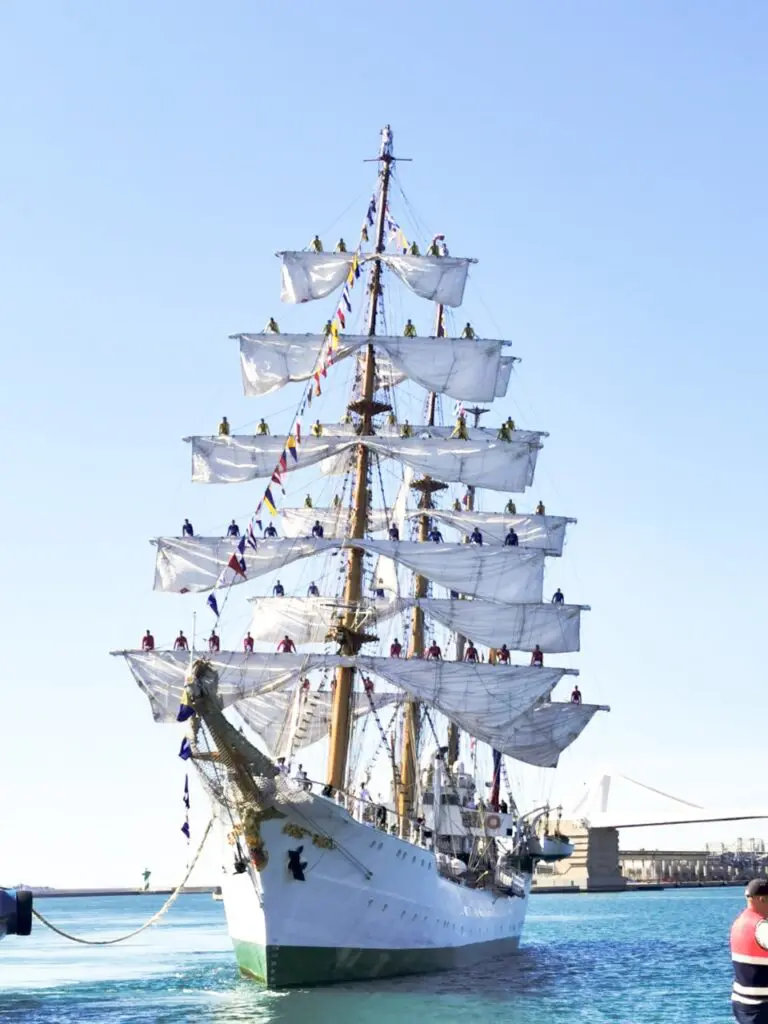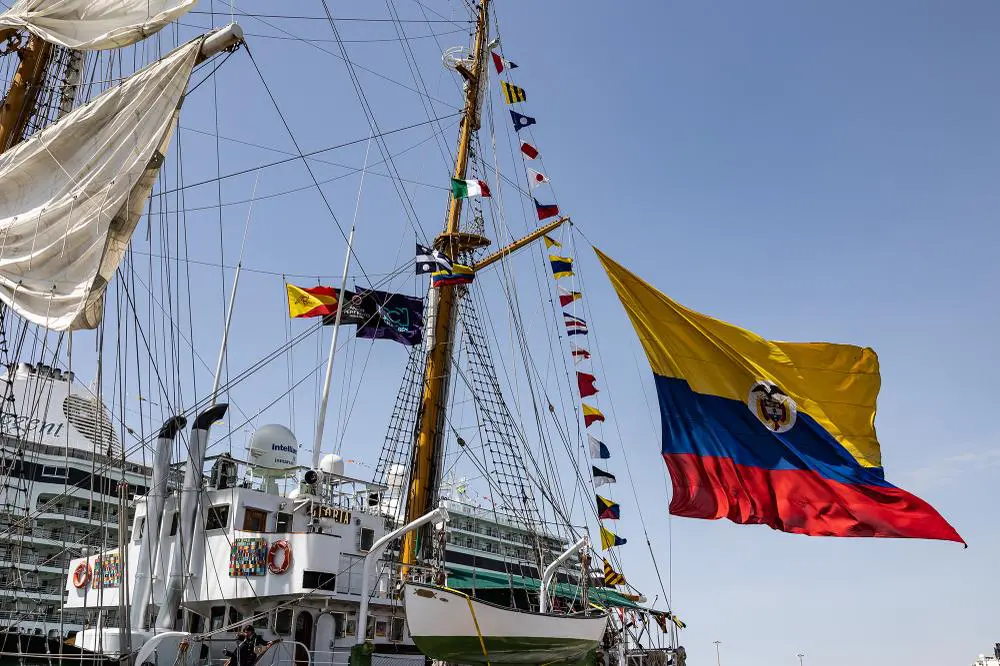The ARC Gloria sailboat from the Surface Fleet of the Colombian Navy arrived in Europe. The first port it arrived at was the port of Cais Da Rocha in Lisbon, Portugal, where it was visited by 2101 people. Its arrival took place on April 14th, engaging in multiple activities that connected our floating ambassador with the Lusitanian nation. These activities included a floral offering to Vasco Da Gama, held at the Jerónimos Monastery; a visit to the Portuguese Naval School; participation in the “Marinheiros de Esperanza” project at the Queen Dona Estefânia Primary School; and a protocol visit to Rear Admiral Nuno Chaves Ferreira, Commander Naval of the Portuguese Navy.

Additionally, during this port call, a Portuguese naval officer, an Italian cadet, and a German cadet joined the crew, aiming to reinforce naval relations with these nations. Colombian sailors also visited the sanctuary of Fátima, Torra Belén, and other places of interest.
The second port visited was pier eight at the port of Civitavecchia in Italy, where it was received by the Colombian Ambassador to Italy, Ligia Margarita Quessep Bitar, and the Chief of Staff for Support to the Colombian Navy’s Force, Vice Admiral Harry Ernesto Reyna Niño, following its passage through the Strait of Gibraltar and the Greenwich Meridian.

This visit occurred from April 29th to May 2nd, marking the completion of the seven thousand nautical miles sailed since the ship’s departure from the port of Cartagena, as reported by Zona Militar.
During the navigation from Portugal to Italy: “the culmination of most academic commitments took place, with final evaluations conducted on topics related to Auxiliary Naval Machinery, Electronic Navigation, Meteorology, and Maneuvers, demonstrating a very high level of academic performance by the students of the Admiral Padilla Naval School,” according to an official statement.
On May 5th, the flag was hoisted in the French city of Marseille, located in the Mediterranean, where various cultural groups of Colombians residing in France showcased folkloric and gastronomic displays. As is customary, tourists were given the opportunity to have guided tours to get a deeper understanding of the training ship. During an interview with international media, Captain César Alejandro Iregui Quevedo, commander of the ARC Gloria Training Ship, stated: “Today they are students, but tomorrow they will be officers, unit commanders; they must uphold traditions and train in the planning of all types of exercises.”



All activities continued until May 7th, and on May 8th, the ship set sail again to pay tribute to the Olympic flame being transported by the Velero Belem, one of the world’s oldest ships of its kind, built in 1896. The ARC Gloria accompanied the Velero Belem in welcoming the significant sports symbol to its next destination, participating in a parade alongside other vessels.
Following this magnificent event, a new navigation took place for three days, culminating on May 11th, marking the completion of Phase 1 of the 2024 Cadet Cruise at the Terminal World Trade Center port in Barcelona, Spain. The ship remained there until May 15th, allowing Catalans to visit and presenting Colombian gastronomy and cultural expressions. Among them were the “Young Creators of Chocó,” a Colombian cultural organization nonprofit that promotes reflection, reconciliation, and peaceful coexistence through urban and traditional dance, and “Sentimiento Cimarrón,” a folk dance company founded in 2005 in Barcelona, working to showcase and integrate traditional Colombian music and dance.
The cultural activities also included: presentations on ancestral Colombian beverages by Chef Rey Guerrero; continuous readings and theatrical representations by the Colombian Nobel laureate Gabriel García Márquez; and other presentations in all visits to countries on the continent. On the other hand, Phase 2 of the cadet cruise begins, where 74 new students will be embarked to replace their peers and thus conclude the training of the 2024 class of the Admiral Padilla Cadet School.

In all visited ports, there were showcases of traditional gastronomy and crafts from different regions of the country, events with local and diplomatic authorities, visits to the photographic exhibition of Colombian birds, replicas of pre-Columbian archaeological pieces from the Gold Museum, and the presentation of the audiovisual project “Pacific Project: Resilience and Truth”. Finally, Colombian products such as coffee, liquors, samples of handicrafts, and various types of souvenirs related to the flagship of the Colombian Fleet were available. Thanks to our Floating Ambassador.
You may also like: The Colombian Army will proceed with the purchase of additional ASV M1117 vehicles from the United States














